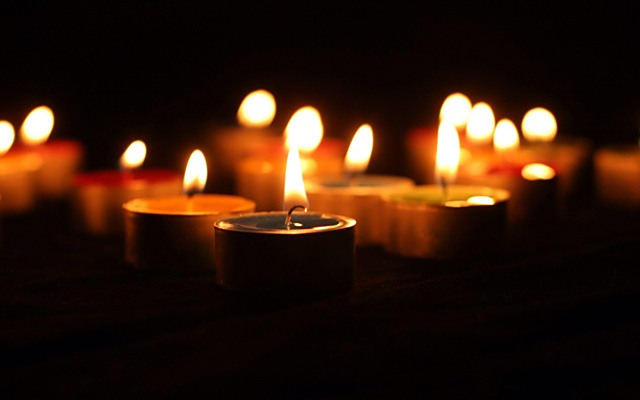
level 5
Comet Tempel 1, the faint smudge located near the middle of this image was obtained with a DSI imager on a Celestron CGE 11". 50-20 second frames were stacked and dark subtracted. This image was taken at the Mauna Kea Visitor Information Station by Michael Connelley and David Brennen on Thursday, June 30, 2005. �
2005年07月04日 06点07分
1

level 5
“炮轰”后的4种可能 第一种可能是没有击中彗核,原因是宇宙飞船“炮弹”和彗星都在以宇宙速度飞快地运动,且不在同一条直线上;第二种可能是虽然击中彗核,但由于彗核比预计的坚硬得多,所打出的撞击坑并不大,溅射出的物质也较少;第三种可能是撞击时爆炸所产生的深坑有一个足球场那么大,撞击瞬间被高温熔化蒸发的物质产生节日焰火般的绚丽景象;第四种可能是彗星在激烈的炮轰中分崩离析,甚至全部瓦解。现在看来,第三种最为贴近。�
2005年07月04日 06点07分
6

level 5
据中科院紫金山天文台研究员王思潮介绍,预计这次炮轰彗星将发生在北京时间7月4日下午13时52分,炮轰后6个半小时彗星将开始进入我国夜空视野。这有利于我国公众对炮轰后喷射出的大量“暴风雪”和尘埃气体云团的观测。但轰击前的观测也很重要。从26日起,月光影响已开始减弱,届时可以对该彗星进行观测。 6月26日~7月9日,坦普尔一号彗星天黑后将出现在南方星空,位于木星和室女星座角宿一星附近。每夜最佳的观测时间从天刚开始全黑到全黑后两小时。撞击前彗星的亮度约为11等星,撞击后亮度有可能增亮几十倍,变成一颗7等星。观测炮轰前的彗星,最好有一架口径30公分以上的高质量望远镜。若想观测炮轰后“烽火连天”的彗星,用10公分以上口径的望远镜就有可能观测到这颗彗星的身影。而要拍下这次历史事件的镜头,用灵活的CCD为上等,也可用数码相机等。 观测除了要求晴朗的夜空和无遮挡障碍物外,还要避开城镇灯光和月光的影响。观测前应该准备一张合适的星图,星图的星等最好能至10等星,并熟悉用星图寻找彗星的方法。天文学家6月初对这颗彗星的观测表明,它像是一颗西瓜籽形状的雾状物,彗尾背向太阳,爱好者在观测半小时后,会看出彗星相对于星空背景有移动,这是区别彗星与河外星云的方法。�
2005年07月04日 06点07分
7

level 5
王思潮提醒,要取得好的观测结果需要提前进行练习,先用寻星镜对准和找出彗星所在视场,后用导星镜或主镜耐心认真地找出该彗星。 我国天文爱好者最近已对这颗彗星进行了观测。池谷-张彗星的发现者张大庆已于6月23日晚观测到坦普尔一号彗星,他使用的是40公分口径、放大51倍的望远镜。接着,他还用放大70倍的目镜对该彗星进行了确认。6月23日晚,从天刚黑到月亮升起只有10多分钟,张大庆紧紧抓住这段时间在21时10分找到了坦普尔一号彗星。 据张大庆介绍,这颗彗星相当暗,估计为12等星,在望远镜中呈暗淡云状物,形状为较胖的椭圆形,彗星大小为1.5角分×2角分,这对应于7万公里大小的彗发(彗发是十分稀薄的尘埃和气体)物质。�
2005年07月04日 06点07分
8

level 5
This display shows highly processed images of the outburst of comet Tempel 1 between June 22 and 23, 2005. The images were taken by Deep Impact's medium-resolution camera. An average image of the comet has been subtracted from each picture to provide an enhanced view of the outburst. The intensity has also been stretched to show the faintest parts. This processing enables measurement of the outflow speed and the details of the dissipation of the outburst. The left image was taken when the comet was very close to its normal, non-bursting state, so almost nothing is visible.�
2005年07月04日 06点07分
15

level 5
Mission Events (Earth-receive time - in EDT) July 3, 2:07 a.m: Impactor released into comet's path completeJuly 4, 12:22 a.m.: 1st impactor targeting maneuver completeJuly 4, 1:17 a.m.: 2nd impactor targeting maneuver completeJuly 4, 1:39 a.m.: 3rd impactor targeting maneuver completeJuly 4, 1:52 a.m.: (+ or - 3 min.): Impact with Tempel 1 completeJuly 4, 2:05 a.m.: Flyby goes into shield mode July 4, 2:06 a.m.: Flyby's closest approach to Tempel 1�
2005年07月04日 06点07分
16

level 5
This movie shows Deep Impact's approach to comet Tempel 1. It is made up of images taken by the spacecraft's medium-resolution camera from May 1 to July 2, 3:50 Universal Time. The spacecraft detected three outbursts during this time period, on June 14, June 22 and July 2. The outbursts appear as flickers or bursts of light. The movie ends during the middle of the final outburst. http://www.nasa.gov/mov/120698main_Outburst%20Movie-070305.movhttp://www.nasa.gov/mov/120698main_Outburst%20Movie-070305.mov�
2005年07月04日 06点07分
17

level 5
Comet Tempel 1 as it appeared on August 21, 2000, at a visible wavelength of 6500 Angstroms. The color scheme is false; least-to-most light is represented by green-to-white. This picture is the composite of 19 separate images of the comet, and since the comet moves across the sky with respect to the background stars, those stars appear as dotted lines. The image captures about 175,000 km of the sky at the distance of the comet. Most of the light we see here is sunlight reflected off of dust grains in the long, extended tail. At the time, the comet was ejecting several hundred kilograms of dust every second. The images were taken at the University of Hawaii's 2.2-m telescope (on Mauna Kea) using a Tektronix 2048 CCD by Drs. J. Pittichova and K. J. Meech. Credit: University of Hawaii�
2005年07月04日 06点07分
18

level 5
Looking down upon the Solar System from above (plane view), this image shows the orbital path of Earth, Mars, Comet Tempel 1 and Jupiter. The positions of the Earth at launch and encounter are marked with a solid circle as is the comet at encounter. Credit: Tony Farnham�
2005年07月04日 06点07分
19

level 5
This image of Deep Impact's impactor probe was taken by the mission's mother ship, or flyby spacecraft, after the two separated at 11:07 p.m. Pacific time, July 2 (2:07 a.m. Eastern time, July 3). The impactor is scheduled to collide with comet Tempel 1 at 10:52 p.m. Pacific time, July 3 (1:52 a.m. Eastern time, July 4). The impactor can be seen at the center of the image. Image credit: NASA/JPL-Caltech/UMD�
2005年07月04日 06点07分
20